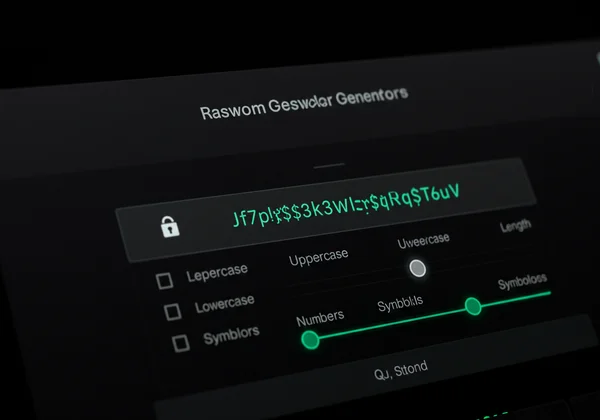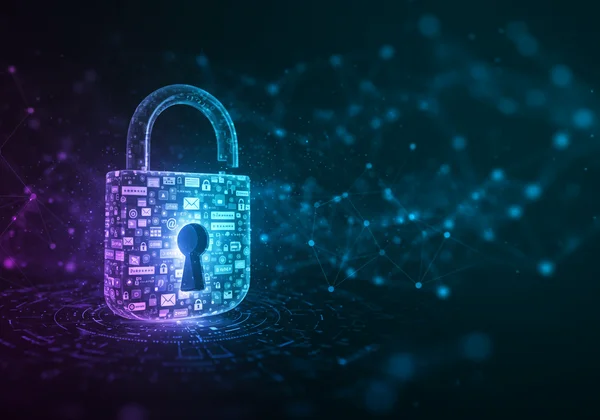Data Breach Action Plan: Create Strong Passwords with Our Online Password Generator
That sinking feeling in your stomach after seeing a "password leaked" notification is all too common in our digital world. Discovering your account has been compromised in a data breach can feel overwhelming, leaving you unsure of what to do next. The good news is that you can take immediate, decisive action to regain control and fortify your online security. How to create a strong password is the first step toward recovery, but it's part of a larger strategy. This guide provides a clear, 7-step cybersecurity action plan to help you navigate the aftermath of a data breach and secure your digital life, starting right now. Don't wait—begin by creating new, secure credentials with an online password generator.

Step 1: Confirming the Data Breach and Your Account Compromised
Before panicking, the first crucial step is to verify the breach and understand the extent of the compromise. Hackers often rely on creating chaos, but a calm, methodical approach will always be more effective. Taking a moment to confirm the situation allows you to focus your efforts where they are needed most.
Checking for Password Leaked with Trusted Services
Your first action should be to use a reputable data breach notification service. Websites like "Have I Been Pwned" allow you to securely check if your email address or phone number has appeared in known data breaches. These services scan massive databases of leaked information and can tell you which sites were breached and what specific data was exposed (e.g., email addresses, passwords, physical addresses). This information is vital for prioritizing which accounts to secure first.

What to Look For: Signs of Account Compromised
Beyond official notifications, you should be vigilant for signs that an account has been compromised. These red flags are clear indicators that someone else has unauthorized access to your information. Look for:
- Emails about password resets or login attempts you didn’t initiate.
- Unusual activity on your social media or email accounts, such as posts you didn't make or messages you didn't send.
- Notifications about new devices logging into your accounts from unfamiliar locations.
- Missing emails or messages, which could indicate a hacker is covering their tracks.
- Friends or contacts reporting strange messages from you.
If you notice any of these signs, assume the account is compromised and move immediately to the next steps.
Steps 2-3: Immediate Actions to Secure Your Digital Life and Generate New Passwords
Once you've confirmed a breach, time is of the essence. The longer an attacker has access, the more damage they can do. These next two steps are non-negotiable and should be completed immediately to lock out intruders and begin rebuilding your defenses.
Change Passwords After Breach – Starting with the Most Critical Accounts
This is the most critical immediate action. Start with the breached account, followed by any other accounts that share the same or a similar password. Prioritize high-value accounts like your primary email, online banking, and government services. Each new password must be both strong and unique. A strong password includes a mix of uppercase and lowercase letters, numbers, and symbols. A unique password means you never reuse it across different services. The easiest way to achieve this is to generate a password using a trusted tool that can create complex, random credentials for you.

Enable Two-Factor Authentication (2FA) for Enhanced Security
Two-factor authentication is one of the most powerful defenses against account takeover. It acts as a second layer of security, requiring not just your password but also a second piece of information—typically a code sent to your phone or generated by an app—to log in. Even if a hacker has your password, they won't be able to access your account without this second factor. Enable 2FA on every account that offers it, especially your email, financial, and social media accounts.
Steps 4-5: Broadening Your Cybersecurity Action Plan
After securing your most critical accounts, it's time to broaden your focus. A single data breach can have a domino effect, impacting other areas of your digital and financial life. These next steps help you contain the damage and monitor for further issues.
Reviewing and Updating Other Accounts
Hackers know that password reuse is a common habit. They will take credentials from one breach and try them on dozens of other popular websites in a process called "credential stuffing." Go through all of your online accounts, from streaming services to shopping sites, and update any passwords that were reused or are weak. This is an excellent opportunity to perform a full security audit and ensure every single account has a strong, unique password. Using a secure password generator can make this process fast and efficient.
Monitoring Your Financial Accounts and Credit
If sensitive information like your name, address, or social security number was exposed, you must monitor your financial life closely. Check your bank and credit card statements daily for any fraudulent charges. Consider placing a fraud alert or a credit freeze with the major credit bureaus (Equifax, Experian, and TransUnion). A fraud alert notifies lenders to take extra steps to verify your identity before opening a new line of credit, while a credit freeze prevents anyone from accessing your credit report altogether.
Steps 6-7: Long-Term Protection and Prevention
Reacting to a breach is important, but the ultimate goal is to build a resilient security posture that prevents future incidents. These final steps shift your mindset from reactive to proactive, ensuring your digital life remains protected for the long haul.
The Power of Strong, Unique Passwords for Every Account
The single most effective habit you can adopt for online security is using a strong, unique password for every account. This practice contains the damage of any single data breach. If one site is compromised, the hackers only get the key to that one door—not your entire digital life. Manually creating and remembering dozens of complex passwords is an impossible task, which is why a strong password generator is an indispensable tool for modern internet use.
Implementing a Password Manager for Seamless Security
A password manager is the perfect partner to a password generator. These secure applications store all your complex, unique passwords in an encrypted digital vault. You only need to remember one master password to unlock the vault. A password manager can automatically fill in your login credentials on websites and apps, making high-level security both seamless and convenient. Combining a password manager with the habit of generating strong passwords is the gold standard for personal cybersecurity.

Fortify Your Future: Building a Resilient Digital Life with Smart Password Practices
While the shock of a password leak is undeniable, remember that you have the power to transform this challenge into an opportunity for stronger digital security. By following this 7-step action plan, you can methodically regain control, repair the damage, and build a stronger, more resilient defense against future threats. The foundation of this defense is strong, unique passwords for every account.
Don't wait for the next breach notification. Take control of your security today. Use our free, secure, and user-friendly online password generator to create the powerful passwords you need to protect your digital life.
Frequently Asked Questions About Password Leaked & Data Breaches
How to create a strong password after a breach?
A strong password should be long (at least 16 characters), complex (using uppercase and lowercase letters, numbers, and symbols), and completely random. Avoid using personal information like names or dates. The most reliable method is to use a custom password generator that creates a truly random string of characters, making it incredibly difficult for hackers to guess or crack.
Are online password generators safe to use?
This is a valid concern. Your security is our top priority, which is why our online password generator operates on a "client-side only" model. This means that every password you create is generated directly in your own browser on your own device. Your password is never sent to our servers, never stored, and never seen by us. This approach offers maximum privacy and security, ensuring that you are the only one who ever sees your new password.
How long should a password be for maximum security?
While 12 characters is often cited as a minimum, security experts now recommend passwords of 16 characters or more for critical accounts. The longer and more random a password is, the more time and computational power it would take to crack. Our tool allows you to generate passwords up to 64 characters, giving you the flexibility to create exceptionally strong credentials for your most important accounts.
What should I do if my password leaked but I don't see unusual activity?
You must still act immediately. Just because you don't see unauthorized activity yet doesn't mean it won't happen. Leaked data is often sold on the dark web and can be used by hackers weeks, months, or even years later. Treat any confirmed leak as an active threat: change your password for the affected account and any other accounts using a similar password right away.
Can a password manager help prevent future data breaches?
A password manager cannot prevent a company's servers from being breached, but it is a critical tool in limiting the damage a breach can do to you personally. By helping you use a unique, strong password for every site, a password manager ensures that if one account is compromised, the rest of your accounts remain safe and secure. It effectively contains the breach to a single service.